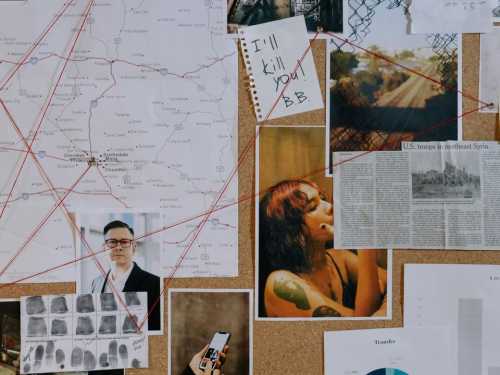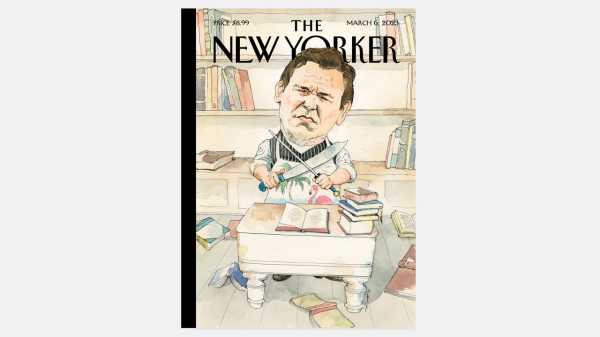
For the cover of the March 6, 2023, issue, the cartoonist Barry Blitt takes aim at the latest battlefield of the culture wars: education legislation. Conservatives—most notably, Florida’s governor, Ron DeSantis—have embarked on a campaign to denounce the influence of schools and libraries. DeSantis’s crusade has included passing Florida’s “Don’t Say Gay” bill, which banned the teaching of sexual orientation and gender identity before fourth grade, in March of 2022; spearheading the state’s Stop WOKE Act, which prohibits any education that has the potential to cause a student to feel guilty about their race or sex; and commandeering the board of trustees, and the curriculum, of Florida’s public liberal-arts college.
“DeSantis’s culture-war campaigns,” as Benjamin Wallace-Wells wrote for this magazine recently, “have operated in American politics like a spooling synth loop: it keeps coming around.” Last July, Florida passed a bill that allows for school media specialists to determine what books are included in the state’s public schools; early this year, schools in the state reported library shelves that have been emptied and papered over.
Though DeSantis has become a figurehead for the conservative book-banning spree, he is far from the first—or the only—politician to seize upon education regulation under the guise of protecting “personal spheres of influence.” But his inflammatory rhetoric has undoubtedly contributed to the moral panic that appears to be spreading across the nation: PEN America found that 2,532 books were banned during the 2021-22 school year, most of which feature characters of color or L.G.B.T.Q.+ characters. And those are only the known ban statistics: administrators have also been discovered to be quietly taking books off the shelves of school libraries all across the country. I talked to the artist about his relationship with books and libraries.
What were your favorite books as a kid growing up in Montreal, and do you think any of them would be banned today?
I can’t remember much of anything from my childhood (not since a traumatic Doobie Brothers concert I attended in my teens). I do recall that I used to devour Hardy Boys books, but no details have stuck with me—not the characters’ names, their activities, or their affinities. I assume the stories were wholesome and bland. But perhaps a politician somewhere is deeply enraged about the boys’ engaging, plucky misadventures.
Easier for me to recall are the children’s books I read to my son when he was young. A particular favorite was a wonderful story from Quebec, “The Hockey Sweater.” Charming and folksy and funny, it used the love of the sport to explore the complicated relationship between French and English Canada, a fraught topic that invites trouble for an author, yet was handled elegantly and with humor. (I’m not going to Google it to see if it has been banned anywhere.)
Were libraries a large part of your life as a child? Do you use them now?
I did hang out at the local library as a kid. I used to get dropped off there for the afternoon, to do homework, or to look at art books or joke books. I think there was a slang dictionary that was particularly popular with my social circle when we were nine or ten years old. But it has been a while since I spent much time at a library. When I lived in Toronto, and later in New York City, I used the city libraries for their great picture collections—it was invaluable photo reference material for an illustrator. But Google has made those trips no longer necessary.
You have illustrated books for kids. What do you think makes a good children’s book?
At nine or ten years old, I would have suggested the slang dictionary. Laughs are important; hilarity is always a good place to start. But, also, a book that depicts an unfamiliar world within which the young reader still finds some familiarity in. Oh, and also lots of cool illustrations that can be stared at for hours at a time.
Actually, I just remembered a book I began working on several years ago that may be relevant here: I had signed a contract with a large publisher (I’d rather not name them) to illustrate a children’s book about the leader of the Third Reich (I’d rather not name him). It was a cautionary biography about a bad man—not a joke. It would have been a very daring kids’ book to actually publish, and I got as far as submitting finished sketches before various marketing people intervened, and the project was scrapped.
For more covers about the pleasure of reading, see below:
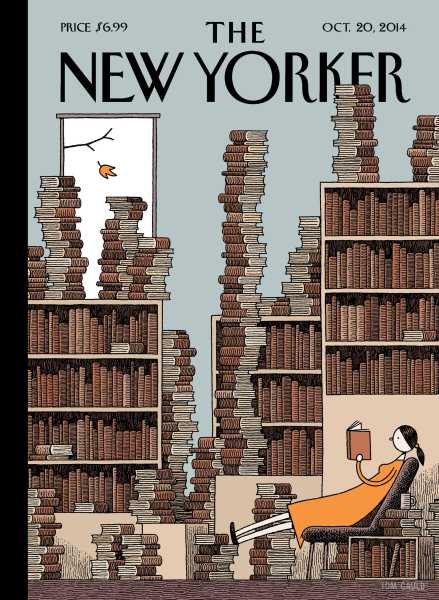
“Fall Library,” by Tom Gauld
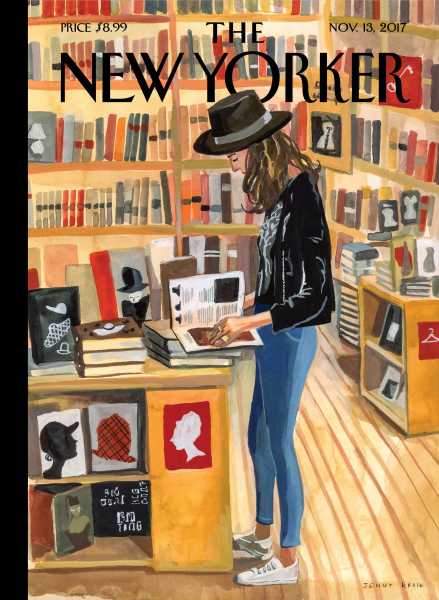
“At the Strand,” by Jenny Kroik
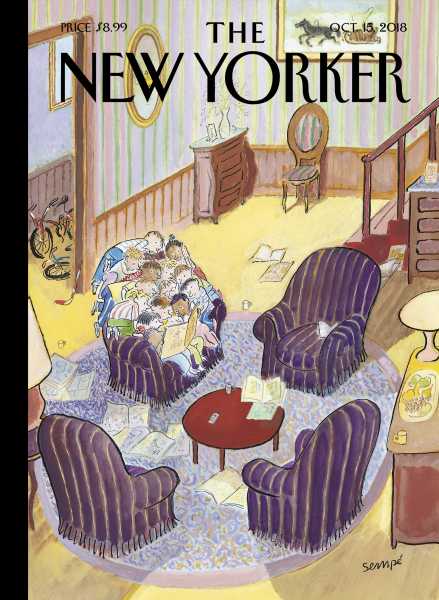
“Reading Group,” by J.J. Sempé
Find Barry Blitt’s covers, cartoons, and more at the Condé Nast Store.
Sourse: newyorker.com

